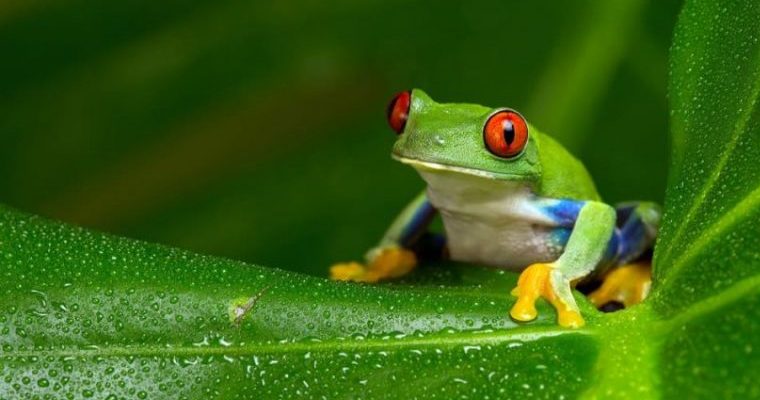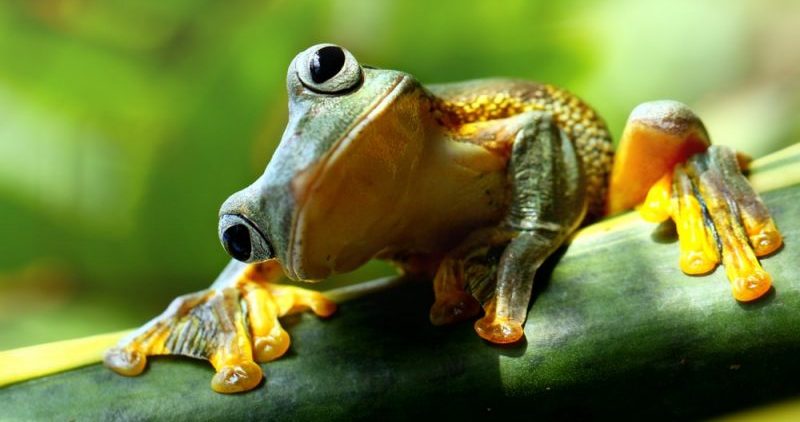The amphibians They are vertebrate animals, in fact they were the first vertebrates that passed from the waters to the mainland. For instance: toad, frog, salamander, newt.
In the past, amphibians represented a very important group of animals, both because of the number of species that existed and because of their large body size. However, they were later evolutionarily overtaken by reptiles, this group being reduced to a few categories.
Amphibians are estimated to have arisen from fish about 360 million years ago, and that reptiles later developed from them, which in turn gave rise to today’s mammals and birds.

Examples of amphibians
- Common toad
- Giant toad
- Salamander
- Triton
- Poisonous frog
- New Zealand frog
- Seychelles frog
- Tree frog
- Blue arrow frog
- Axolotl oo ajolote (Mexican salamander)
- Cecilia
- Pygmy flatfoot salamander
- False newt jalapa
Amphibian characteristics
Amphibians have the bare skinThey breathe through gills and do not have legs when they are young; when they are adults they breathe through lungs and have four legs with interdigital membrane.
In addition, they undergo metamorphosis, that is, they go through different phases of life, mainly three:
- The egg one
- The larval (gill-breathing)
- The adult (lung-breathing).
In fact, they are the only vertebrates to undergo metamorphosis.

Some features:
- Adult amphibians can live in water or on land (semi-terrestrial life), larvae can only live in water.
- Amphibians breathe through the skin (cutaneous respiration), to keep the skin moist and prevent desiccation, they have glands through which they secrete mucus.
- They are animals of external or internal fertilization and oviparous.
- They do not have hairs or scales.
- They feed on insects, worms, slugs, and spiders; also vegetables or small mammals, as well as fish and larvae.
- When the external temperature is very low, they tend to remain inactive, and often survive thanks to the reserve of fats that they have accumulated in their body.
- These are animals that gobble up their food without breaking it down previously.
- They have a characteristic organ, the cloaca, which acts as the only exit orifice with urinary and reproductive function.
Classification of amphibians
There are three orders or classes of amphibians:
- Gymnophiona or apodal (without limbs)
- Caudata or caudates (with tail)
- Anura or anurans (frogs and toads).
It is estimated that there are some 4,300 species of amphibians that live today, but by the way it is a biological group whose populations have been in clear decline for some time to this part, mainly due to the alteration of their natural habitat and climate change.
